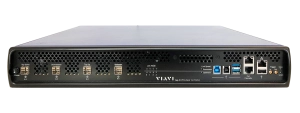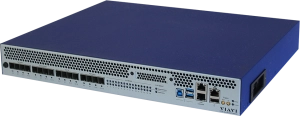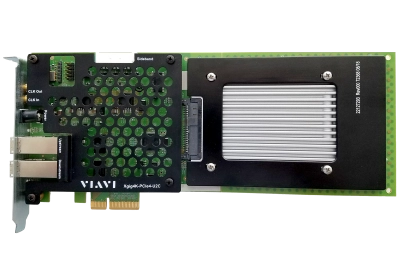The VIAVI Solutions 4-lane, U.2-CEM Interposer for PCIe 4.0 uses high-speed linear signal redrivers to buffer the PCIe data lanes across the Interposer between host system and SSD devices-under-test. This Interposer enables debug and verification of new NVMe controller ICs, new system implementations, firmware, validation of system BIOS and software, and is used for manufacturing test quality assurance. It supports full decode and analysis of NVMe and PCIe traffic including NVMe-MI protocol.ing, equalization and other in-band and side-band data
Highlights
- Operates up to 16GTps, PCIe 4.0 data rates
- Downward compatible with PCIe 1.0, 2.0 and 3.0 data rates of 2.5, 5.0 and 8.0GTps
- Supports links of up to and including 4-lanes
- NVMe SSD DUT (not supplied) plugs directly into the Interposer
- Supplied with two high-performance custom cables for Analyzer attachment
- Data path uses high-speed linear redrivers to ensure good signal capture with little or no tuning
- Supports Analyzer side-band signal capture and triggering
- Provides two differential clock connectors
- Interposer power is independent of host system
- A 120/220 AC in, 12V/3A DC output converter is included
- LEDs give quick indicators of power and status
- Format: Design based on 4-lane PCIe CEM specification
- Supported by VIAVI Analyzer tools for trace capture with filter, trigger and more
- Provides consistent, repeatable capture of link training, negotiation and other data
- Supports error injection for deep system analysis
- Supported by Xgig tool suite including Trace Control, Expert and Serialytics
Applications
- Used for NVMe controller IC, sub-system and system level debug
- Supports firmware and driver development, validation, and performance tuning
- Works together with the VIAVI PCIe4 and PCIe5 Analyzer/Jammer platform
Benefits
- Faster analysis and problem isolation
- Quicker time to market and earlier revenue
- Lower engineering costs
- Provides consistent, repeatable capture of link training, equalization and other in-band and side-band data
-

Xgig 4K4 Analyzer Platform for PCI Express 4.0
The Xgig 4K4 platform provides protocol analysis for PCIe and NVMe traffic at all layers of the stack -

Xgig 4K16 Analyzer/Jammer Platform for PCI Express 4.0
The most powerful PCIe Gen 4.0 analysis system available, offering complete visibility into traffic flows with advanced trace and analysis and jamming capabilities.
Related Products
Support at Every Step
We provide support, services, comprehensive training and the resources you need. It’s all part of what we do to maximize the value of your VIAVI investment.
Let Us Help
We’re here to help you get ahead.
